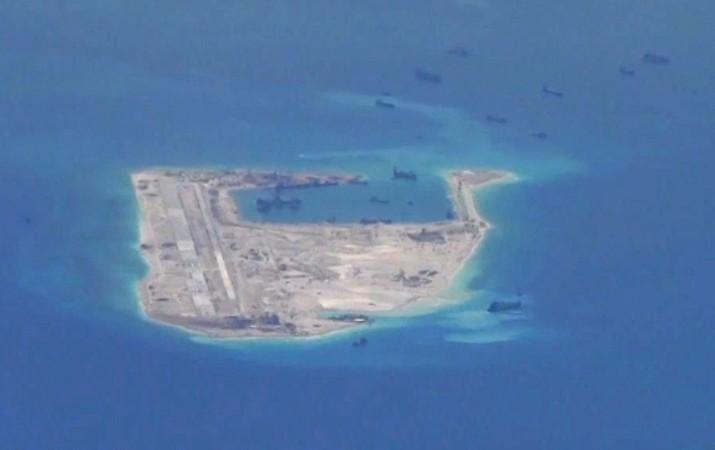
For the second year running, Japan is sending a helicopter ship on a two-month tour starting in September, to the South China Sea and the Indian Ocean to strengthen its presence in the strategically-important maritime region.
"Japan wants that the Indo-Pacific maritime region remains open and free for navigation of ships and this is part of Japan's efforts to ensure that it doesn't change," says an official.
The Kaga − the largest ship in the Japanese navy along with its sister ship Izumo − is 248 metres long and can carry a maximum of 28 helicopters. During the tour, the ship will stop in Indonesia, Sri Lanka and India.
Escorted by an escort ship, Kaga, whose primary role is anti-submarine warfare, is likely to conduct exercises with warships of friendly countries in the region. In 2017, Japan sent the Izumo on a similar mission to the same area.
The growing presence of Japanese ships in the South China Sea is a counter to China's claim over almost the whole of the South China Sea and its construction of artificial islands and building military infrastructure and airstrips on them. Maritime trade routes, which sustain Japan's economy, pass through this region and Japan along with the United States are concerned that China will try and block access through these waters.
Though China says its intentions are peaceful, it too has increased naval operations there. The US regularly sends out air and naval patrols to the area to keep a watch on Chinese activities and ensure that China respects freedom of navigation.
In May this year, in a major and significant shift with an eye on the South China Sea, US renamed the Hawaii-based Pacific Command as Indo-Pacific Command on the prodding of Japan and Australia. With this move, the newly-named command will have under its control military forces, including naval, which will be responsible for an area stretching from the Pacific Ocean to the Indian Ocean.
Japanese navy ships don't sail with their US Navy counterparts in enforcing freedom of navigation in South China so as to not provoke the Chinese who might counter the Japanese by increasing patrols in the East China Sea where both countries dispute each others' claim on the uninhabited island known as Senkaku in Japan and Diaoyu by China.
While Japan doesn't claim any part of the South China Sea, as its only concern is that trade routes through the sea remain open, other countries like Philippines, Vietnam, Malaysia and Brunei claim part of the South China Sea, which has rich deposits of oil and gas and is a prime fishing area.
Moving west towards the Indian Ocean, tension between India and China moved up a few notches, over China's increasing intervention in Maldives, which despite having close political and security ties with India for a long times, has decided to become part of China's Belt and Road initiative to build transport and trade links across every continent.









